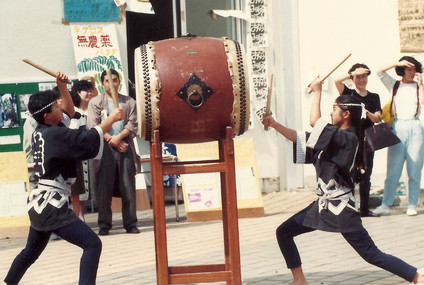 By Lisa Nakamura, Nen Daiko member One day, I was exploring the grounds of my new secondary school in Saitama, Japan and wandered into the gym. There, I happened upon a group of high school seniors rehearsing a taiko piece for a large concert. This may sound overly dramatic, but that experience really did turn my world upside down and I was mesmerized. Maybe the experience had such impact because I was 12 years old and the seniors were big, powerful, and like rock stars. They were so athletic and expressive. I could feel the reverberations in the pit of my stomach and my feet were glued to the floor. I had never seen or felt anything like it. I wanted to be a part of THAT. Taiko and Japanese folk dancing was part of the physical education curriculum at my secondary school, and the first piece we learned in 7th grade was a version of a festival piece from Hachijo Island off the coast of Tokyo. We referred to all the variations simply as “Hachijo Daiko”. Here I’m performing the piece at our school’s fall cultural festival with my taiko partner, Fuma. Although we went on to learn, practice, and perform many other pieces during the six years at our school, this piece really instilled the fundamentals of listening and tuning into the other player. Hachijo Daiko is simply made up of a base rhythm played by one player on one side of the drum and the song overlaid by the player on the other side of the drum. If you can imagine yourself squaring up in front of the drum, you realize all you can see is the round drum head in front of you and your partner’s feet on the other side of the stand. There are no visual cues to help sync your playing so it requires you to intimately know how the patterns relate to each other and intensely focus on the vibrations coming through the drum to the point where your breath is eventually in sync with your partner. Because we went to school in Japan, my classmates and I were fortunate to have access to the towns and villages where these traditional drum and dance pieces originated, and also to professional performers of Japanese folk arts. We would spend our summer breaks traveling to various parts of the country, including Hachijo Island, soaking in what we could from these experts. 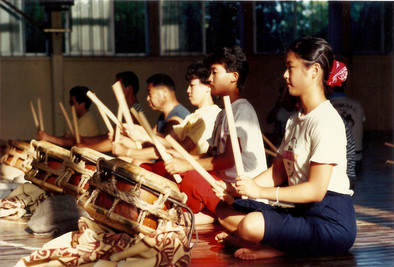 A pair of tween girls traveling around solo may be a bit unusual these days, but my very first trip with Fuma was in 8th grade to attend a week-long workshop with the professional taiko group, Kodo. It took us a full day of travel on slow local trains, ferries, and buses to arrive at Sado Island where the workshop and summer festival were to take place. Participants ranged widely in age and came from all over Japan and even other countries. This was before the days of organized tours from the United States. We had group accommodations at a traditional Japanese inn, where we slept together on floors of tatami mats with a futon on top. We would eat and practice communally with Kodo members and staff at an old school they converted into their living quarters and practice space. Here is a photo of the gym where we practiced every day. 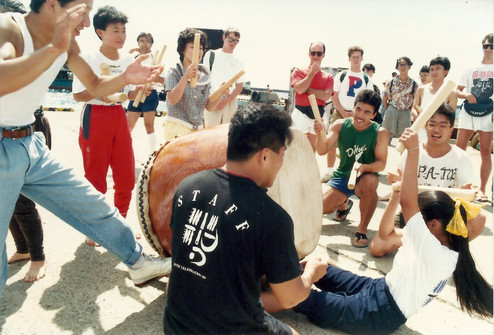 Everyone, participants and instructors, were so down to earth and really passionate about taiko. The atmosphere was nothing but supportive and we were all eager to share and learn. We practiced intensely during the day, joked around during break and meal times, and waxed philosophical about taiko (at the ripe age of 13) on the tatami mats at night. All of this culminated in a performance at the summer festival Kodo had just started to organize for their local town on Sado Island. Here I am performing what we learned at the Earth Celebration fringe festival. You can see how supportive everyone was of each other! 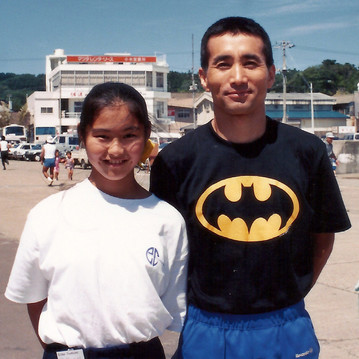 Blog author, Lisa Nakamura, with Yoshikazu Fujimoto Blog author, Lisa Nakamura, with Yoshikazu Fujimoto Looking back, what an unbelievable luxury it was to learn and simply be around people who were dedicating their lives to the art of taiko! A young Yoshikazu Fujimoto, Eiichi Saito before he was a principal player on the Odaiko, and Leonardo Eto when he was a Kodo member were just a few of the players that were simply there sharing their enthusiasm for taiko. Anyone who dabbles in taiko could easily be star-struck by these players, but the fact that they carried themselves as just another person who loved taiko made a lasting impression on me. I was a 13 year old with maybe a year of taiko playing under my belt, but I was treated as another a kindred spirit, or “nakama” in Japanese, who also loved taiko. Using the word “humble” as a description almost seems pretentious and doesn’t really describe how they simply were themselves. The world is now smaller with so much global access, but today, I remember fondly of the adventure filled summers of local trains, little villages on remote islands, fellow drummers, and once-in-a-lifetime experiences through taiko. I need to remember the simple joys of playing taiko more often!
0 Comments
|
Archives
May 2024
Categories
All
|
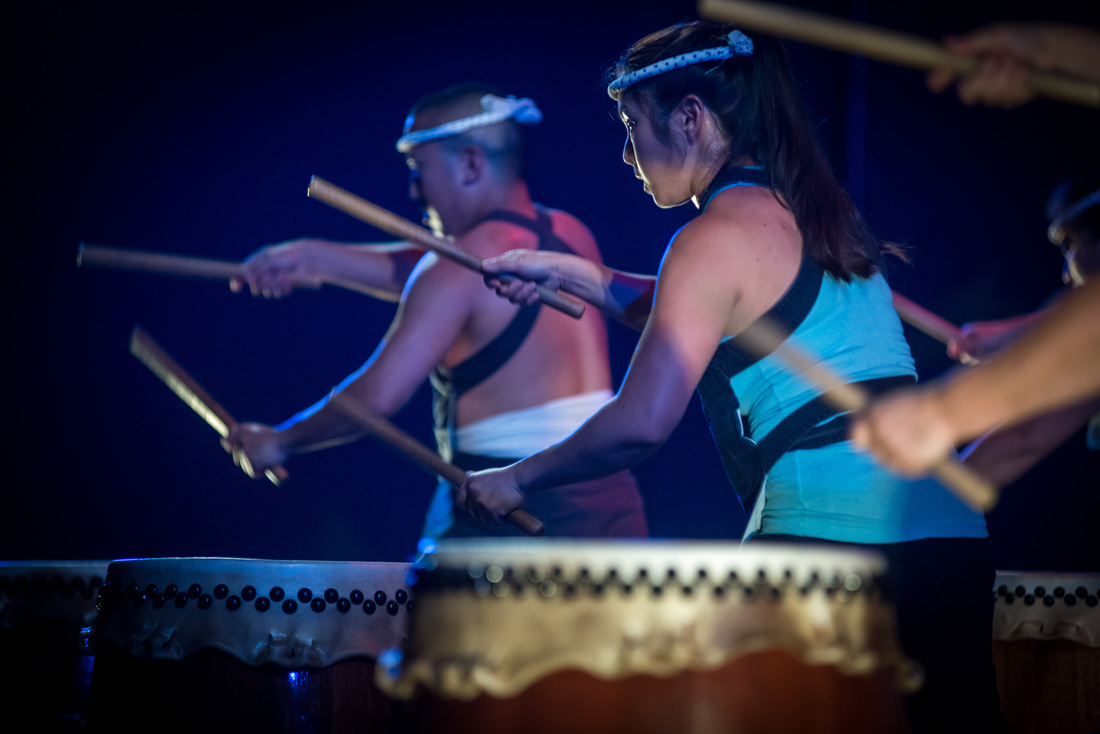
 RSS Feed
RSS Feed